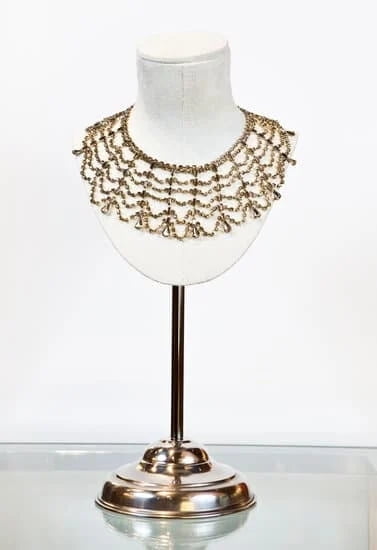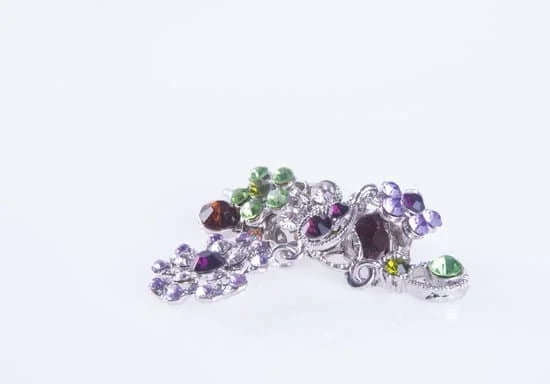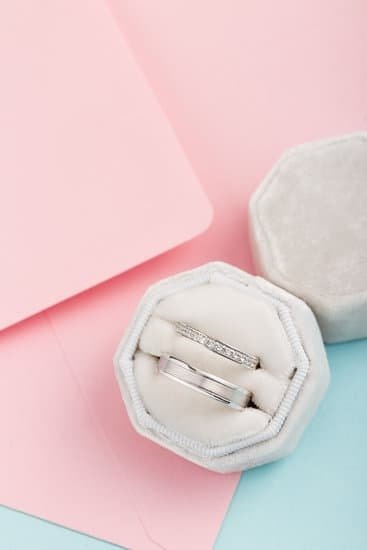Introduction-A Brief History of Permanent Jewelry Welding
Permanent jewelry welding is a very old and traditional craft that has been practiced for centuries. In the 15th-century goldsmiths would often melt gold pieces together with a blow pipe to create intricate jewelry designs. This was the first form of permanent jewelry welding, but it wasn’t until the industrial revolution in 18th century England that permanent welding for jewelry became more widespread and popular.
During this period, English inventors developed machines to weld iron and steel, which eventually were adapted to specifically weld gold, silver, and other precious metals in order to craft beautiful pieces of jewelry. After World War II came improvements in electric welding techniques as well as advances in safety protocols that allowed for increased use of permanent welding in the fabrication process.
Today there are several different types of permanent welding techniques used by professional craftsmen worldwide to craft fine quality jewelry pieces. The most common type of permanently welded jewelry is made using laser or arc welding machines. These machines allow craftsman to accurately place thousands of tiny dots of heat onto metal components with laser precision. This helps keep each piece free from defects and also makes creating complex designs much easier than ever before.
Benefits of Using a Permanent Jewelry Welder
Using a permanent jewelry welder is one of the most efficient and cost-effective approaches to creating custom pieces. This type of machine uses high frequency voltage to create a very strong welded joint that won’t weaken or break over time. This not only makes it an excellent choice for jewelry makers that want to ensure the durability of their pieces, but also for experimenters who are more interested in creating something new and unique rather than traditional styles. Additionally, the use of such welding machines grants the user far more control in terms of both rate and pressure since they can regulate these levels as needed depending on what material is being used. This helps ensure welds have a consistent quality, which contributes significantly to the overall aesthetics of each piece. Furthermore, they allow users to get into some nooks and crannies that may have been difficult using traditional methods. Finally, many professional welders are finding they don’t need to invest as much time into prepping materials as they would with other welding machines since permanent jewelry welders heat up quickly and cool down just as fast.
Versatility of Applications
A Permanent Jewelry Welder is a specialized tool used to join pieces of jewelry permanently with heat and pressure. The purpose of this machine is to produce high-quality joints that are strong, consistent, and durable over time. This type of welder has a variety of applications, as it can weld both items made from precious metals like gold and silver, as well as industrial metals like steel and titanium. It can also be used in fine watch repair and to set diamonds or other stones in their settings. With this type of welder, expert technicians have the ability to execute complex repairs on delicate jewelry items with precision. Furthermore, these machines are able to work on different thicknesses of material depending on the desired outcome. Different types of heat tip attachments allow users to make minute adjustments for working on more delicate pieces as well. This makes them an indispensable tool for any fine jewelry store as they provide speed, accuracy, and reliability with various welding tasks.
Different Types of Permanent Jewelry Welders& Their Uses
Permanent jewelry welders are used in the jewelry industry to make permanent connections between two pieces of gold or silver, creating jewelry pieces with superior strength. Permanent welders can be used for a variety of applications, from attaching gemstones to setting stones with pave inlays.
The most popular forms of permanent welders include laser welding units and resistance welding systems, each bringing its own set of advantages when it comes to making jewelry. Laser welding units are best suited for very fine details and precise control over the size of the welding joint, while resistance welders are more suitable for heavy duty projects and larger structures. Additionally, there are pulse arc welders which provide increased accuracy and speed when working with smaller pieces.
In terms of construction and operation, arc-based permanent welders create hot sparks that merge gold or silver together by heating the metal up until it’s malleable and then cooling down quickly afterward. Pulse arc welders utilize electrodes that vibrate to produce an intense spark in order to achieve a rapid fusion between metals quickly without lasing or melting them.
Finally, induction welders also exist as viable alternatives that use electromagnetic current based on magnetic induction technology instead of heat energy to join metals together permanently. With any type of welder system, depending on what kind of project you are working on and how much control over the process is desired, certain types might be better suited than others.
How to Use a Permanent Jewelry Welder
A permanent jewelry welder is an effective and efficient way to permanently attach metal parts in jewelry making, such as jump rings or charms. The process of using a permanent jewelry welder is relatively easy; however, jewelry makers must ensure they have the right preparation and safety equipment to avoid any accidents while using this type of tool.
Before beginning, it is important to make sure you have the right welding tips for your specific type of project. Then it’s time to assemble all of the necessary components including protective eyewear, respirator masks and welding wire. Make sure that all these components are safely connected before turning on the machine. Once everything is set up, make sure that your work space is well-ventilated so that no hazardous fumes enter into the room.
Once ready, position your pieces where you want them attached and turn on the power switch. Move the tip of the welder over the metal pieces so that it heats up both pieces until molten before pressing them together with sufficient pressure to form a strong bond between them. Once done, allow them to cool down before taking them off from the machine carefully as they may still be hot even after cooling down for some time. It is also important to clean up immediately afterwards with water or cleaning chemicals if needed in order to get rid of any residues left on your project from welding at high temperatures. With proper setup and procedure followed, you should now have successfully welded two pieces of metal together!
Key Safety Tips for Use
Permanent jewelry welding is a specialized task that requires concentration and attentiveness. A jewelry welder must be skilled in the art of jewelry joining before attempting to work with permanent welds. Read below for some key safety tips to ensure a safe and effective process when using a permanent jewelry welder:
1. Set up the work space with adequate ventilation and fresh air circulation to reduce the risk of breathing in hazardous fumes. Place protective barriers beneath the welding area to prevent potential fly-off sparks from damaging surrounding materials
2. Wear appropriate eye protection, heat resistant gloves, long sleeved shirt and trousers, closed toe shoes and preferably a face shield while operating the welder.
3. Make sure that all surfaces are prepped and thoroughly cleaned with steel wool or sandpaper prior to welding, as dirt and oil deposits can prevent proper melting which can lead to weaker bonds.
4. Slowly move away from the workpiece after contact has been made as welding produces alternating current which can be dangerous if not handled properly
5. Remain vigilant throughout your entire process as certain welds may require more immediate attention than others in order to keep everything looking clean and tidy
6. Have a fire extinguisher near by at all times, just in case there is any kind of accident during the process that could result in a flame or spark flying off away from the work piece
7. Double check your area after you have completed your project for any stray pieces of metal that may have become wildly separated during welding- these pieces can be dangerous if handled incorrectly, so it’s important to make sure all debris is removed safely before ending your work session
Maintenance and Care Guidelines
A Permanent Jewelry Welder is a specialized tool used for creating or repairing intricate jewelry pieces. To ensure optimal performance and longevity of your tool, it is important to practice proper maintenance and care. Here are some guidelines to follow:
Clean – Clean the device after every use with a soft cloth. Make sure not to let any excess liquid, dust, or dirt get in the crevices, as this could damage the internal components.
Store Away – Store away the device in a safe place when it’s not being used. This way, you can be sure that no one will accidentally knocks it and break something on it.
Check Inclusions – Check regularly for any damaged parts or broken seals which could easily cause an electrical short. Replace these immediately if needed to avoid any potential harm or malfunctions arising from loose parts.
Temperature Control – Avoid exposing the device to extreme temperatures for long periods of time, as this can badly affect its delicate internal components.
Handling – Be careful when handling the device as rough treatment could cause damage that could render it useless. Also, make sure not to overuse it, or strain its capacity beyond what is specified by the manufacturer.
Look for Odors- Check for odd smells close to where you are using your Permanent Jewelry Welder during use as these may indicate an issue with your wiring or another component and should be looked into promptly by an experienced technician if any arises.
Perform Maintenance Inspections – Performing regular maintenance inspections can help identify minor defects before they become more serious problems down the line. Look out for chipped paint coatings on exposed surfaces, burnt out wires, frayed insulation on wiring harnesses give warning signs that something needs to be serviced soon in order to prevent bigger issues later on.
Tips and Tricks for Getting the Best Results
A permanent jewelry welder can be a very useful and powerful tool in any jewelry maker’s arsenal. It allows you to join together nearly any metals, as well as some types of stones, with precision. By using soldering foil and a flux, you can create secure welds that won’t come undone over time. To get the best results when using a permanent jewelry welder, here are a few tips and tricks to keep in mind.
First, make sure you clean your pieces before welding by wiping away all grime and oil from the surfaces that need to be joined together. This will ensure that your contact points are clear and free from any contaminants that might otherwise interfere with the process. Additionally, it’s important to make sure both pieces are fitted flush against each other before welding them; this will help ensure a strong bond and give you an even weld line.
After prepping your pieces for joining, adjust your machine’s settings based on what type of material you’re working with. If you’re welding different colors of metal, make sure to choose red or yellow blue light patterns which correspond closely with the colors of the metals being joined together. In addition, look at the suggested current output on your machine’s user manual and set the amperage accordingly; too little or too much current can create poor welding results if not balanced correctly. Finally, always practice caution when handling your permanent jewelry welder; these machines generate an incredible amount of heat and should never be handled without proper safety protection such as gloves and eye protection!
Summary and Conclusion
A Permanent Jewelry Welder is an important and valued profession. They are responsible for transforming raw materials into visually appealing pieces of jewelry. They use a variety of skills to weld and fabricate jewelry, such as soldering, gas welding, arc welding, among others. They ensure the highest quality standards while keeping up with ever-changing jewelry trends. The end result is beautiful work that serves to enhance the user’s appearance.
By providing a range of skills and producing stunning results, Permanent Jewelry Welders have become highly sought-after in the industry. Their unique craftsmanship leads to high satisfaction amongst their clientele. In addition, their expertise has enabled remarkable customizations that allow customers to create special pieces of jewelry according to their desires. Furthermore, constant research ensures the usage of leading edge technologies in the production of quality jewelry products. As a result, Permanent Jewelry Welders are increasingly becoming more prominent in both traditional and contemporary industries alike.
To sum up, Permanent Jewelry Welders offer an invaluable service through their artistry, accuracy and passion for creating beautiful works of jewelry art. With years of experience and knowledge in both traditional and innovative techniques, they provide exceptional customer service by delivering exquisite pieces of one-of-a-kind jewelry that adds beauty to any ensemble or collection. In short, they are truly masters who will continue on bringing pleasure long after the piece has been finished.

Welcome to my jewelry blog! My name is Sarah and I am the owner of this blog.
I love making jewelry and sharing my creations with others.
So whether you’re someone who loves wearing jewelry yourself or simply enjoys learning about it, be sure to check out my blog for insightful posts on everything related to this exciting topic!





